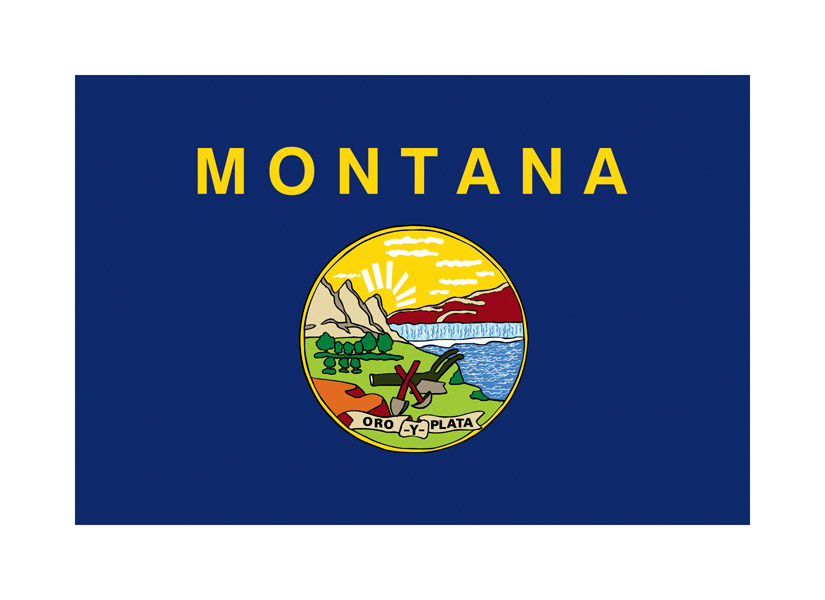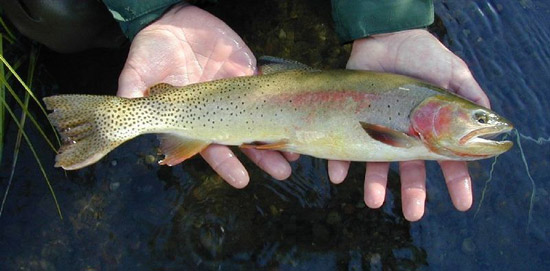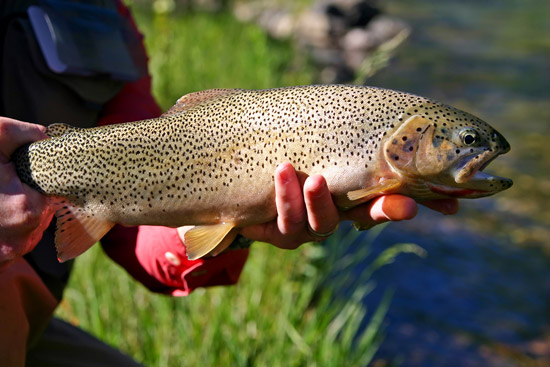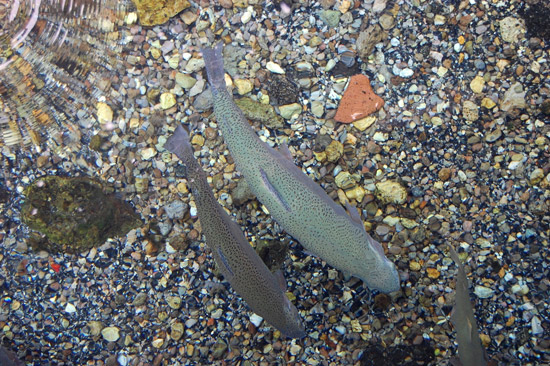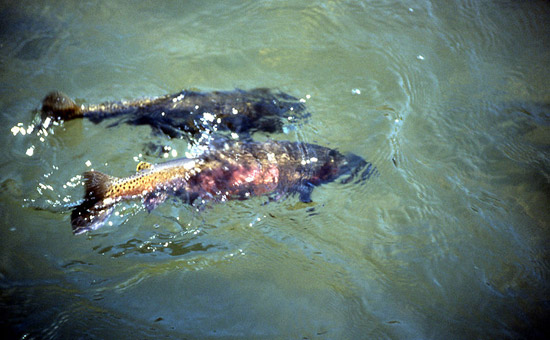Cutthroat Trout (common name)
Oncorhynchus clarki (scientific name)
Overview
The cutthroat trout is a strikingly beautiful member of the salmon family that is native to, and practically synonymous with, the high country of the American West. These trout are one of the most highly prized fish species of the majority of American fly fisherman, and their meat is considered a culinary delicacy.
The cutthroat species has evolved via geographic isolation into many subspecies, each native to a different drainage basin. Each type of cutthroat trout varies in terms of size, color, and habitat. Body color ranges from olive green to silver-gray on the back with sides anywhere from yellowish brown to red or pink. Black spots, red spots, blue spots, and irregular oval "parr marks" mark the cutthroat’s flanks in a variety of patterns.
The one thing that unites all subspecies is the red coloration underneath the lower jaw, from which all cutthroats get their name. The cutthroat is the state fish of Montana (designated in 1977), Idaho (designated in 1990), and Wyoming (designated in 1987). Regionally specific subspecies of the cutthroat are also the state fish of California, Colorado, Nevada, New Mexico, and Utah.
Close-up
Status
Official
Physical Details
Length: Up to 40 in (100 cm); average of 12 in (30 cm)
Weight: Up to 41 lbs (36 kg); average of 1 lb (450 g)
Lifespan
Up to 7 years
Habitat
Clear, cold headwater lakes, streams, and rivers
Range: western North America
Water type: Freshwater; Some populations are born in freshwater rivers but live in the Pacific Ocean as adults and return to fresh water to spawn. Most cutthroats live in freshwater their entire lives.
Water temp: 55–62°F (13–17°C)
Elevation: Up to heights of 10,000 ft (3,000 m) and depths of 165 ft (50m) in freshwater, 656 ft (200 m) in saltwater
Conservation Status: Threatened
Diet
Insects, larvae, small fish, fish eggs, crustaceans, frogs, and earthworms.
Reproduction
Fertilization: External
Spawning frequency: Fall to Spring
Mating behavior: Distinct Pairing
Egg laying: The female brushes aside gravel to make a depression (or "redd") in the pool of a small stream. Males nudge the female to spur the dispersal of the eggs and then release their milt over the eggs to fertilize them. Eggs hatch in the spring. Adults do not guard the nest.
Uses
Sport fish, food fish, edible roe, aquaculture
Other Names
Bonneville cutthroat, coastal cutthroat, greenback cutthroat, Lahontan cutthroat, Paiute cutthroat, Snake River cutthroat, Rio Grande cutthroat
Trivia
- The cutthroat’s scientific name refers to William Clark, who formally categorized the species after returning from the Lewis and Clark expedition of 1804–1806.
| Classification | |
|---|---|
| Kingdom: | Animalia |
| Phylum: | Chordata |
| Class: | Actinopterygii |
| Order: | Salmoniformes |
| Family: | Salmonidae |
| Genus: | Oncorhynchu |
| Species: | O. clarki |
Copyright © 1993-2026 World Trade Press. All rights reserved.


